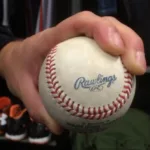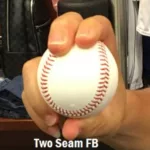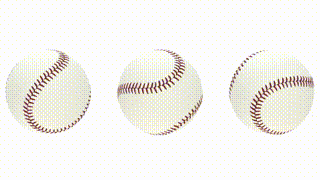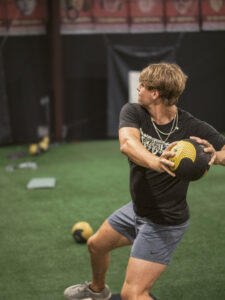Mastering the art of pitching involves understanding various types of pitches, each with unique mechanics and effects. Among the most effective pitches in a pitcher's arsenal are the sinker and the two-seam fastball. Both pitches can deceive hitters with their late movement and generate ground balls, making them crucial for any pitcher looking to elevate their game.
 What is a Sinker?
What is a Sinker?
A sinker, also known as a sinking fastball, is a pitch that appears to drop suddenly as it reaches the batter. This late movement makes it difficult for hitters to make solid contact, often resulting in ground balls. The sinker is typically thrown with a tight grip, with the index and middle fingers close together along the seams. The downward wrist motion at release is crucial for imparting the sinking action, which makes this pitch a valuable tool for inducing ground balls and double plays.
What is a Two-Seam Fastball?
A two-seam fastball, or two-seamer, is a fastball that has slight arm-side run and sink. The movement is more subtle compared to a sinker, but it can still effectively jam hitters and induce weak contact. The grip for a two-seam fastball involves placing the index and middle fingers along the seams, slightly apart compared to the sinker grip. The slight pronation of the wrist during release helps create the desired movement. This pitch is particularly useful for keeping hitters off balance and for pitching to contact.
The Mechanics of Throwing a Sinker
 Grip:
Grip:
- Finger Placement: Position your index and middle fingers close together along the seams of the baseball. The seams should run under your fingers to provide the necessary grip and friction.
- Thumb Position: Place your thumb underneath the ball, slightly off-center. This grip helps in creating the desired spin and movement of the sinker.
Stance and Windup:
- Balanced Stance: Stand with your feet shoulder-width apart to ensure stability and balance.
- Relaxed Windup: As you begin your windup, focus on staying relaxed and fluid. This will help in maintaining control and reducing tension, which is crucial for an effective sinker.
Release Point:
- Downward Wrist Motion: Release the ball with a downward wrist motion. This action imparts the sinking action on the ball.
- Finger Positioning: Ensure your fingers stay on top of the ball at the release point to maximize the downward force, creating the characteristic drop of a sinker.
Follow-Through:
- Natural Arm Extension: Follow through by allowing your arm to extend naturally. A smooth and natural follow-through helps in maintaining control and consistency in your release.
- Maintain Control: Ensure that your follow-through does not compromise your balance and control. A consistent follow-through is essential for the effectiveness and accuracy of the sinker.
The Mechanics of Throwing a Two-Seam Fastball
 Grip:
Grip:
- Finger Placement: Position your index and middle fingers along the seams of the baseball, slightly apart compared to the sinker grip. This allows for a more secure hold and helps generate the desired movement.
- Thumb Position: Place your thumb directly underneath the ball. This provides balance and stability, ensuring a consistent release.
Stance and Windup:
- Balanced Stance: Stand with your feet shoulder-width apart to maintain stability and balance throughout your delivery.
- Relaxed Windup: Focus on a consistent and smooth windup. Staying relaxed will help you maintain control and reduce the risk of injury.
Release Point:
- Wrist Pronation: Release the ball with a slight pronation of your wrist. This means turning your wrist slightly inward as you let go of the ball, which helps the seams create the characteristic movement of a two-seam fastball.
- Finger Positioning: Aim to keep your fingers slightly inside the ball at the release point. This positioning helps in generating the natural tailing action of the two-seam fastball.
Follow-Through:
- Natural Arm Extension: Allow your arm to follow through naturally, completing its motion without forcing it. A smooth and natural follow-through helps in maintaining control and reducing strain on your arm.
- Maintain Control: Ensure your follow-through is consistent and balanced. A controlled follow-through is essential for accuracy and the overall effectiveness of the two-seam fastball.


 Grip:
Grip: Grip:
Grip:

 Why Elite Mechanics Matter
Why Elite Mechanics Matter Key Benefits of the 3X Pitching Velocity Program:
Key Benefits of the 3X Pitching Velocity Program:
